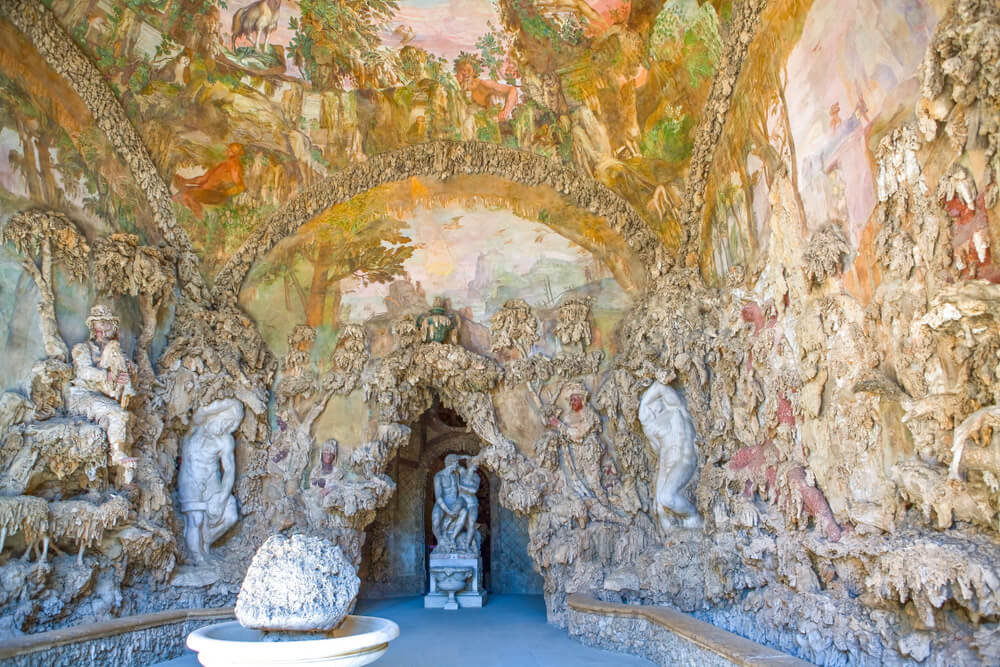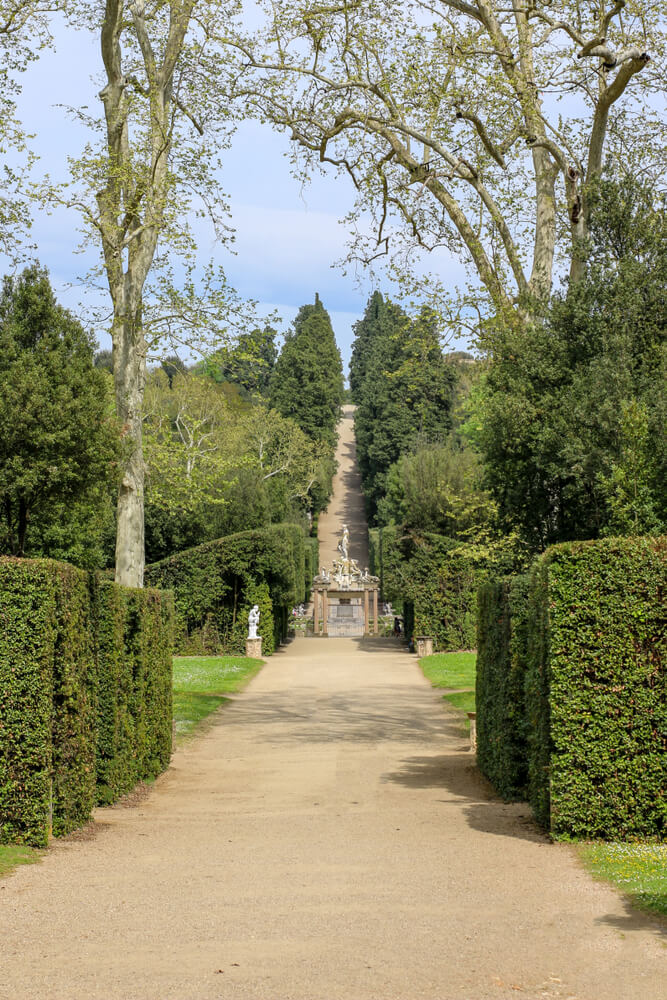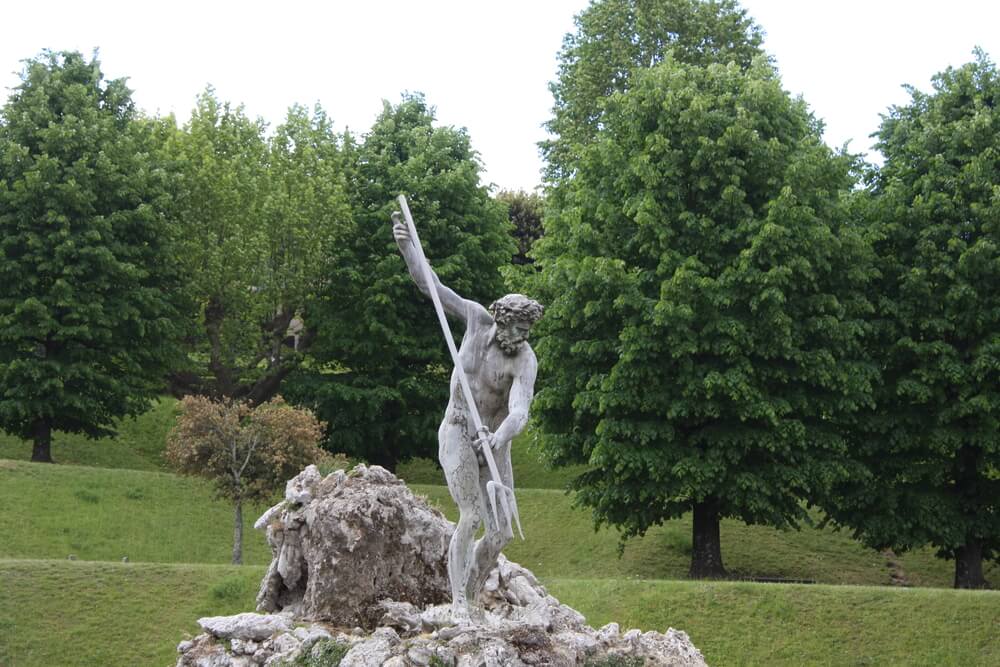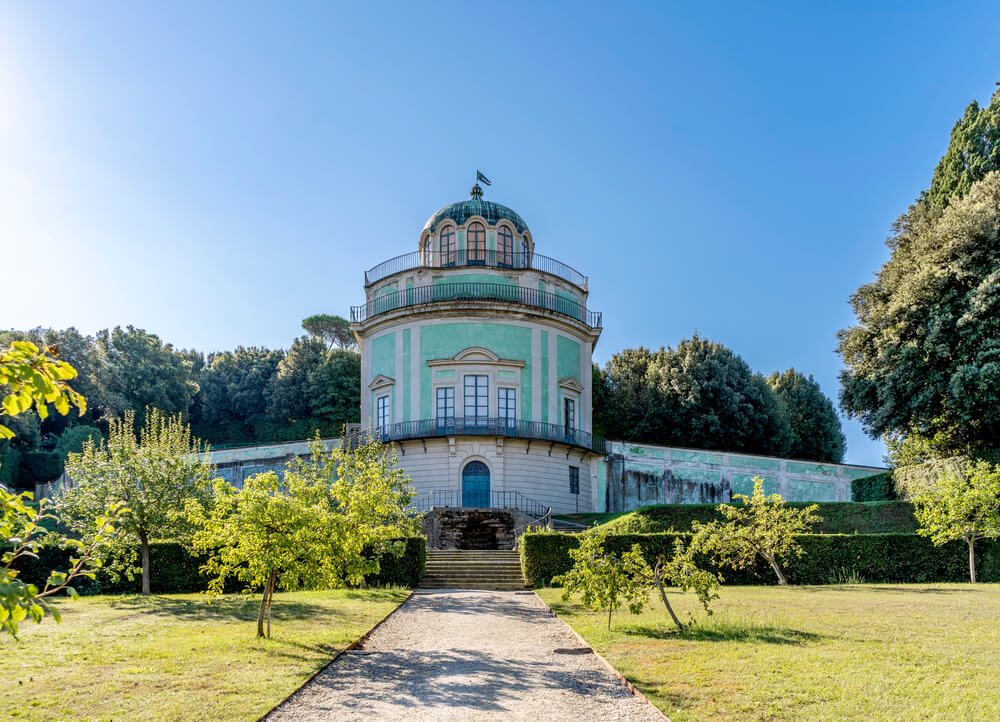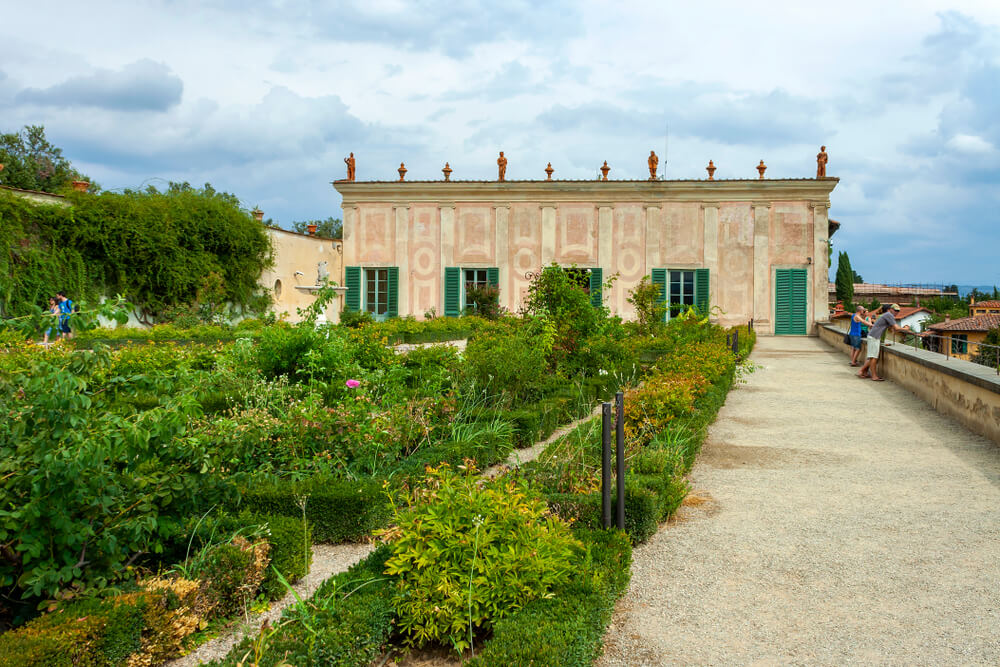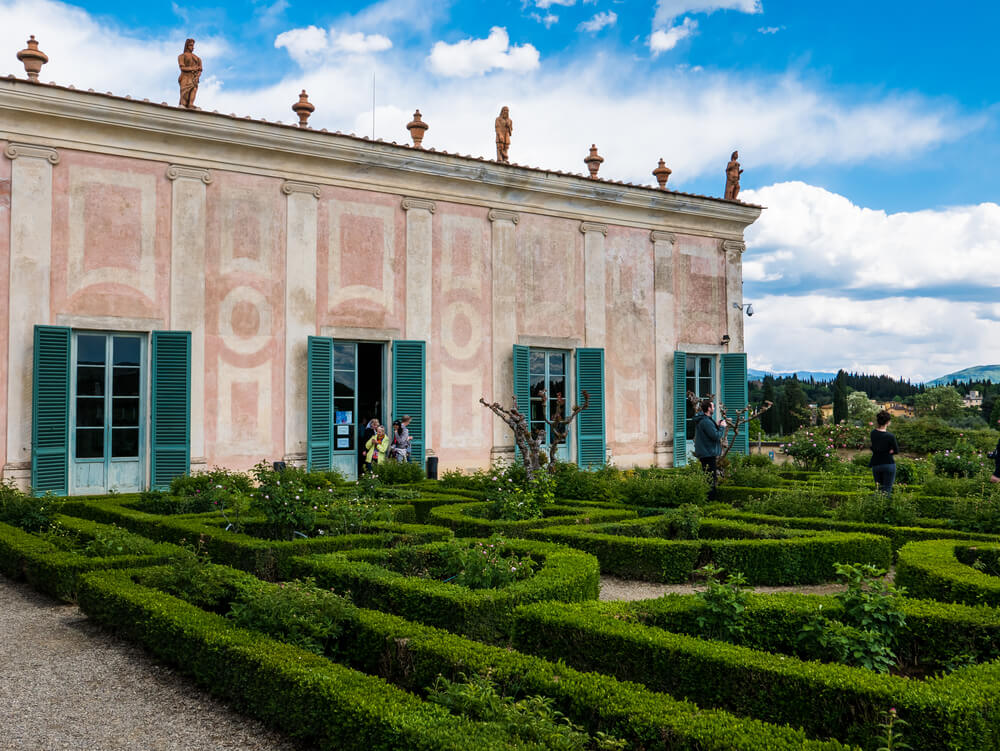Visit the Boboli Gardens in Florence
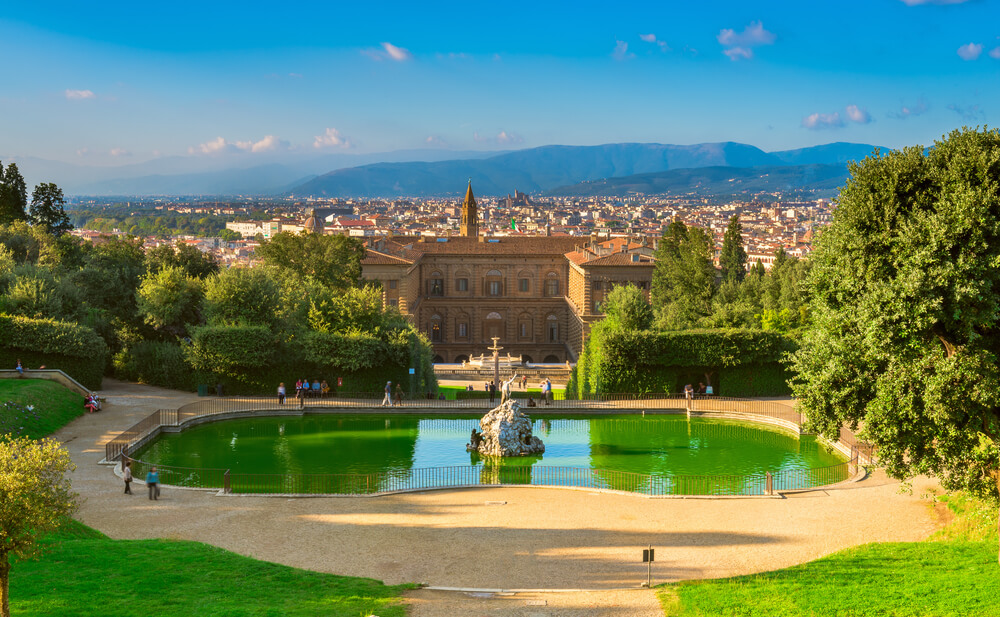
Located in the historic centre of Florence, behind Palazzo Pitti, this garden is undoubtedly the most famous in the city. It’s a visit not to be missed during your stay in Florence, if only for the exceptional view over the city!
In fact, this 45-hectare haven of peace, overlooking the hustle and bustle of the city, naturally has many assets to live up to its reputation. Famous names have played a part in its development since it was built in 1550, and you should allow at least 2 hours to visit it to fully appreciate its beauty.
What is there to see? How can I visit Florence’s Boboli Gardens? We’ll answer all your questions.
History of the Boboli Garden in Florence
It was the wife of Cosimo I de’ Medici, Eleonora of Toledo, who took charge of the development of this garden when she purchased the Palazzo Pitti in 1550.
Renaissance-style gardens with geometric motifs were created, as well as grottoes, fountains, an amphitheatre and statues to complete the romantic atmosphere of this Italian-style garden. It opened its doors to the general public in 1776.
Often regarded as an open-air museum, it has served as an example for European courts and was listed as a UNESCO World Heritage Site in 2013.
What can you see in Florence’s Boboli Gardens?
The masterpieces on display in the garden include
1 – The amphitheatre
Located behind the Palazzo Pitti, the amphitheatre in the shape of a racecourse is surrounded by hedges and statues inspired by Roman myths. In the centre stands an Egyptian obelisk from Luxor, originally designed at the request of Ramses II.
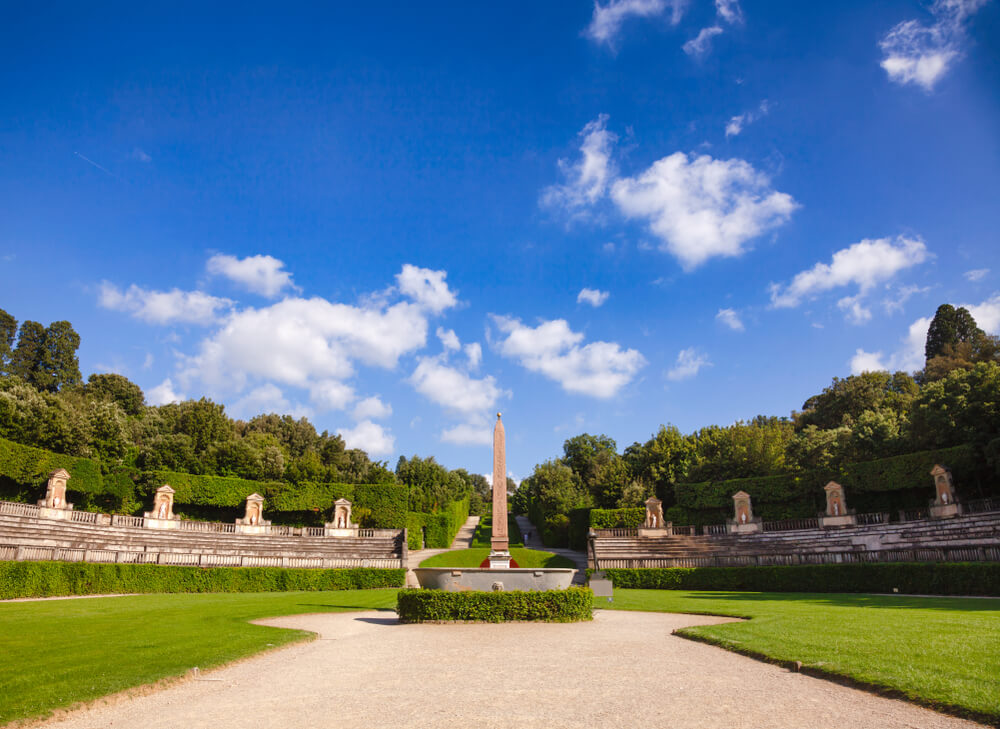
2 – The Great Grotto of Buontalenti
The marble statues of Apollo, Paris, Helen and Venus are a sight to behold.
The centrepiece of this water garden is the Ocean Fountain, whose statues represent strange mythological creatures. It comprises several frescoed chambers. Also worth a visit The Grotticina della Madama or Madam’s Grotto.
3 – The Viottolone
This long, steeply-sloping avenue of greenery is lined with terraces and tunnels of trees and foliage, providing cool shade in the heat of summer!
Perfect places to sit, read, chat or catch your breath. The path leads directly to the Isolotto, a 17th-century pond.
4 – The fountains
The Bacchus fountain
The statue of Bacchus has taken the form of the dwarf Morgante riding a tortoise.
A jester who was mistreated at the Medici court when he arrived, and who, by dint of his intelligence and skill, managed to gain a place of choice with CosimoI as his personal adviser.
Other fountains to see
- The Fountain of Neptune, recognisable by the trident with which he strikes mermaids and tritons.
- The Ocean Fountain, in the middle of the Isolotto pond, with 3 sculptures representing the Nile, the Ganges and the Euphrates.
- The Jupiter fountain
- The Artichoke Fountain, adorned with statues and crowned with bronze lilies.
5 – The Kaffeehaus
This Rococo-style pavilion dates back to 1775, and was given its name because it was the place where Leopold I of Tuscany, the Archduke of Austria, would come for coffee accompanied by his court.
Today, you can enjoy a coffee at the top of the building and admire the Viottolone.
6 – The Knights’ Garden
A magnificent place where fragrant roses and May flowers bloom under the protective eye of the 2 marble muses.
The icing on the cake: enjoy a spectacular view from the terrace of the magnificent Florentine manor houses that rise up from the green countryside.
7 – The Porcelain Museum
A very fine collection of porcelain from Italy, France and Germany, with paintings of floral and other inspirations. Pieces of great refinement.
How do I visit the Boboli Gardens in Florence?
- A visit to the Boboli Gardens in Florence requires you to spend at least 2 hours, or even half a day if you can, exploring every corner.
- This park, which is extremely popular with locals and tourists alike, is visited all year round and at all times of the day. However, a visit between May and June will allow you to fully appreciate the roses and other dahlias in the garden, which will be in full bloom. There will be fewer people than in July/August, and it is cooler in spring.
- Please note: many objects are strictly forbidden in order to preserve the garden as much as possible: walking sticks, bicycles, skateboards, roller skates or scooters and anything motorised, even electric. No pets either, except guide dogs.
- People with reduced mobility can enter the Boboli Gardens from Piazza Pitti or Piazza Romana, but an accompanying person is required because of the clay and gravel that make up most of the ground here. What’s more, there are quite a few slopes to climb up and down.
- Remember to buy your ticket in advance to avoid queuing on the day.
- Guided tours are available.
Practical information about the Boboli Gardens Florence – 2022
Opening times
The Boboli Garden is open every day from :
- 8.15 am to 4.30 pm from November to February,
- 8.15 am to 5.30 pm in March,
- 8.15 am to 6.30 pm in April, May, September and October,
- 8.15 am to 6.50 pm from June to August,
- 8.15am to 5.30pm in October
Exceptional closures:1st and last Monday of each month, 1st January and 25th December.
Admission to the Boboli Gardens in Florence
Free admission on the1st Sunday of every month, as well as for disabled visitors and children under 18.
From March to October
- Adults: €10
- Adults aged 18-26: €5
November to February
- Adults: €6
- Adults 18-26: €3
Bus : lines 11, 36 and 68.
This Italian-style garden is well worth a visit, with its terraced gardens, typical geometric patterns, symmetrical lines, works of art inspired by antiquity and the majestic cypress trees that are symbols of Tuscany. Last but not least, the view over Florence is simply sublime!
200 audioguided tours for cities all around the world
Download